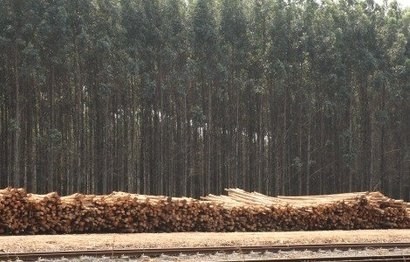
In the production of biofuels from woody biomass, feedstocks represent a significant expense with costs incurred for planting, harvesting, and transporting the trees. Growers typically look at how many trees they can plant per acre with little consideration given to how much fuel those trees will produce or the quality of that fuel.
The researchers analysed 900 samples of black cottonwood trees grown in Oregon to determine how variations in their size and composition affect feedstock quality and biorefinery economics.
“Those differences do make an economic difference” said Brian Davison, a biochemical engineer with ORNL and a lead on the project.
The findings are detailed in a new paper, “Economic Impact of Yield and Composition Variation in Bioenergy Crops: Populus trichocarpa” published in the journal Biofuels, Bioproducts & Biorefining. In addition to Davison, the other co-authors are Renee Happs, Andrew Bartling, Crissa Doeppke, Anne Harman-Ware, Mary Biddy, and Mark Davis from NREL; and Erin Webb, Robin Clark, Jin-Gui Chen, Gerald Tuskan, and Wellington Muchero from ORNL.
The amount of fuel produced per acre each year and the minimum fuel selling price (MFSP) are most strongly connected to the size of a tree. But when considering the largest 25 percent of trees, the size and sugar content were of nearly identical importance to the MFSP, the researchers found.
“Over the long run, in the case of a biorefinery, that adds up to millions of dollars by taking the genotypes that give you the most sugar” said Happs, an analytical chemist at NREL and lead author of the paper.
The scientists chose the black cottonwood tree to study because of its fast growth and its prevalence across North America. The tree can be ready to harvest after about seven years from planting. In addition to the sugar content, the researchers also analysed the amount of lignin, which forms rigid cell walls and bark that is difficult to break down. The analyses informed a techno-economic analysis of using the black cottonwood as a biofuel feedstock.
The trees with the best attributes can be cloned for rapid propagation. “We can also breed for the key genes to increase both sugar content and growth” Davison said. “We observed that there was no correlation between composition and size - hinting that we could selectively breed for maximising both of these attributes simultaneously without trading one for the other,” said Bartling, who conducted the techno-economic analysis of the poplar samples.
Genetic engineering may allow for further improvement of sugar content. The researchers used computer modeling to evaluate a hypothetical scenario involving two clones in which the sugar was increased by 5 percent among a smaller set of the trees. The additional sugar content reduced the MFSP, highlighting how composition can begin to compensate for economic losses in smaller trees—perhaps in a region where poor conditions may not allow them to grow as large.
The research was funded by the BioEnergy Science Center and the Center for Bioenergy Innovation from the US Department of Energy Bioenergy Research Centers.
NREL is the U.S. Department of Energy's primary national laboratory for renewable energy and energy efficiency research and development. NREL is operated for the Energy Department by the Alliance for Sustainable Energy, LLC.
For additional information:

